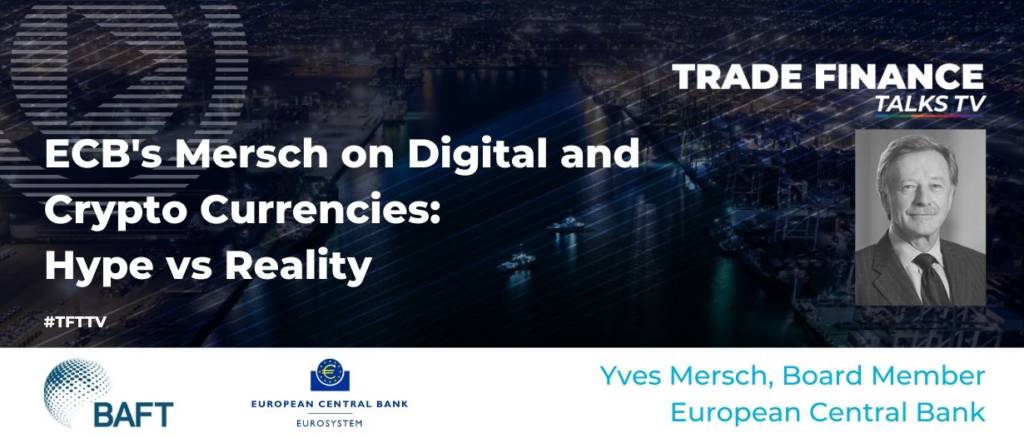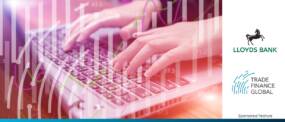Legal grounds, qualifications, developments and issues
In this article, the author examines a potential « future of money » in its cryptographic and legal dimension, i.e. the creation of an immaterial, efficient, extra-banking mean of payment, universally accessible and fully backed by the State, that is, in the present case, by the Swiss National Bank.
1. From Ecash to Bitcoin
Before cryptography was used to anonymize payments, it was thought to guarantee anonymity in e-mail exchanges[1]. At CERN’s inaugural conference, cryptographer David Chaum said about the Internet: « [e]verything you do could be known to anyone else, could be recorded forever. It’s antithetical to the basic principle underlying the mechanisms of democracy »[2]. In addition, Chaum presented his company DigiCash and his Ecash patent, an electronic payment system centralized between different banks[3], which probably came too soon at the time since it failed to establish itself with merchants and the public. Five years later, in a 1999 interview by the President of the National Taxpayers Union, US economist and Nobel Prize Milton Friedman added: « [t]he one thing that’s missing, but that will soon be developed, is a reliable e-cash, a method whereby on the Internet you can transfer funds from A to B, without A knowing B or B knowing A ». This approach, of which Chaum had been one of the great precursors, was finally going to become a reality ten years later with the creation of Bitcoin[4], a continuation of Ecash but in a decentralized and open source format.
1.1. Cryptocurrencies stricto sensu
In 2014, the Swiss Federal Council agreed to respond to two parliamentary postulates on the risks and opportunities of what were then frequently referred to as virtual currencies. In doing so, the Swiss Government formulated two concluding elements that resonate particularly strongly today considering the current developments in Central Banks Digital Currencies (“CBDCs”). These are as follows:
- In view of the monetary policy of the time, virtual currencies could not threaten price stability and the stability of the Swiss financial system in the short term. The Swiss Federal Council also recognized that « [t]he longer-term development in this area is, however, difficult to predict »[5]; in addition,
- « [t]he fact that [Bitcoin] is not managed by centralized agencies and that, consequently, prosecuting authorities lack interlocutors makes it all the more difficult the effective elucidation of offences and misdemeanours and the consequent confiscation of assets »[6].
At that time, the world was mainly familiar with cryptocurrencies in the strict sense (stricto sensu) of the word[7]. In contrast to cryptocurrencies in the broad sense (lato sensu), which are to be understood as cryptographic tokens having a functional or market value independently or in conjunction with a monetary function, cryptocurrencies in the strict sense are understood as means of payment offering no rights vis-à-vis an issuer and having as their intrinsic value only that of the computer protocol that constitutes them. The market value of cryptocurrencies in the strict sense therefore fluctuates according to the law of supply and demand, which is itself generally linked to:
1) changes in the global acceptance of the concerned cryptocurrency as a mean of payment for the purchase of goods and services,
2) announcements of corrective updates or developments in its underlying protocol (soft forks, hard forks, splits in consensus, etc.) or,
3) market manipulations[8], which is less frequent today in comparison with years 2016 to 2018 because of the increase in global regulatory surveillance of the various platforms on which they are traded.

2. From bitcoin to stablecoin
It was therefore from the cryptocurrencies in the strict sense that the following evolution logically came about, namely the notion of stablecoin. This term is to be understood as a mean of payment created in accordance with asymmetric cryptography for which the issuer grants – or does not grant – a redemption right and to which the said issuer attaches one or more financial or non-financial asset(s) so as to guarantee an intrinsic value above zero. Depending on the issuer, the next step is to differentiate between a private and a public stablecoin including the digital currency of a central bank (CBDC).
Finma, the Swiss financial regulator, recently proposed a classification of the various private stablecoins encountered in its practice according to the type of underlying asset(s) attached to them, which can indeed be considered as bank deposits, collective investment schemes, other types of financial instruments – such as derivatives – or even a payment system in the case of a large-scale project[9]. Some of these stablecoins aim to improve the efficiency of transactions within the same group of customers and group entities. This is the case, for example, with the JPM coin[10].

2.1 The Libra
The private stablecoin that has seen the biggest recent media buzz is without a doubt the Libra project[11], announced by the Facebook group in June 2019. It was indeed after the first political reactions[12] that various central bankers and international institutions responded to the issue at stake, that is nothing less than the threat of the end of state monopoly in the creation and management of a guaranteed mean of payment, globally recognized and directly accessible to the public. It is true that reflections and initiatives about the creation of a state cryptocurrency system predate the Libra project[13]. But the awareness of public authorities and central banks inevitably followed the announcement of this project. Proportionate to its purpose, the target audience and the new technology used, such a project is reminiscent of the Swiss WIR currency, which the Swiss Federal Supreme Court ruled to be a private monetary order[14].
The Libra stablecoin is designed using the dedicated « move » protocol[15]. The Libra Association, installed in Geneva, is responsible for creation and destruction of this stablecoin. With regard to the Libra’s intrinsic value, the project’s White Paper states that: « [t]he Libra is designed to be a stable digital cryptocurrency based entirely on a reserve of real assets (the Libra reserve) »[16]. At its inception, the Libra is made up of various currencies as well as liquid and short-term government bonds[17].
One could venture here to describe a plausible business model that distinguishes at least two types of reserves. The first type works as an initial locked-up capital constituted by the founding members’ initial contributions that would serve to guarantee the first Libras granted to these founding members, thus simultaneously creating a monetary system among them[18]. At start-up, a second fluctuating reserve would be constituted by payments made in fiduciary money by the public purchasers of Libras to bank accounts hold by Calibra Inc.[19] or by any other global Libra Group affiliated entity, be it in the USA or not. Once the payment is received, that entity would require the Libra Association to create the corresponding Libras ex nihilo and transfer them to each purchaser’s wallet. As the Association does not offer a redemption right of Libras against fiat, even with a commission, the initial purchaser would have to find a new buyer on the market[20]. This buyer, hypothetically a partner of the Libra Group, would agree to pay a commission to the Calibra Inc. bank or affiliated entity, which would also have the final seigniorage revenue.
Thus – and for example – when buying 1’000 Libras against USD 1’000, the new buyer (the Libra Group’s partner) would only reimburse the original buyer USD 995; and the bank of Calibra Inc. or affiliated entity would pay the Libra Group’s partner USD 997.50, keeping USD 2.50 as a profit from the transaction. Finally, at the same time, the Libra Association would burn the stablecoins transferred to the wallet of the Libra Group’s partner, thereby proportionally reducing the overall number of Libras in circulation.
As the project currently stands, however, some Swiss scholars are of the opinion that the acquisition of Libras constitutes an interest-free loan to the Association[21]. Independently of this and hypothetically, if the Libra were already recognized as a mean of payment with a legal tender in a single particular country, the purchase and sale of this stablecoin against fiduciary currencies could even be described as a foreign exchange transaction[22]. With therefore the potential absurdity of buying and selling Libras against a currency that would itself participate in the constitution of the Libra’s intrinsic value (the Reserve).
3. Central Bank Digital Currency
TFG speaks to Yves Mersch, European Central Bank on Central Bank Digital Currencies

3.1 Definition, conditions and use of the word « currency »
Without going into a subject as broad as monetary matters, it is, however, necessary to agree on a simple definition of money before considering its electronic dimension and its issuance by a central bank. In this instance, the generally agreed historical definition is that of Aristotle[23], i.e. money is understood as (1) a unit of account[24], (2) a medium of exchange[25] and (3) a store of value[26]. Material form and transportability are still necessary subconditions during the lifetime of this author. What is remarkable is that Aristotle does not automatically link the creation of money to the laws of the city, since money is in fact constituted by a private international convention[27] between different cities in order to have a common and necessary mean of payment for trade. Therefore, both the initial conception of money according to Aristotle and the recent private initiatives to create asset-backed stablecoins – be they well or badly conceived – must remind us that it is up to the market to decide whether a mean of payment should be qualified as money or not[28]. It follows that money should not, in the absolute sense, be conceived only from the point of view of a State but above all from any point of view, as soon as the Aristotelian conditions are met.
Of course, it is understandable that the intrinsic value of a stablecoin not issued by a State could be considered as unstable and/or weak by said State (particularly as said State is the guarantor of its fiduciary money). But a group of firms or individuals – assuming they have confidence in a stablecoin secured by several assets -, who use it regularly and may count with the units by which it is constituted, would in fact be using a money (“currency”). If, on the other hand, a stablecoin is only secured by a single fiduciary money (currency), one would rather be dealing with the cryptographic representation of such already existing currency (thus benefitting from the related technological advantages, such as the Tether or the XCHF[29], for instance) than with a separate currency. And if the representation relates to another type of asset, one can fall into tokenization – and therefore investment – before being able to meet the conditions of medium of exchange and unit of account.
In any case, while compliance with the reserve value condition is certainly highly questionable in the case of a cryptocurrency[30], it is certainly less so in the case of a stablecoin, since this term presupposes the existence of a mechanism for guaranteeing its intrinsic value. It should also be noted that although the Swiss Federal Constitution provides that the notion of currency falls within the competence of the Swiss Confederation[31], Swiss law does not define it as such. It does, however, list the means of payment that have a legal tender value, the conditions under which these must be accepted and the conditions under which they must be created and withdrawn[32]. In the end, it could therefore also be a question of perspective, depending on whether one supports the concept of a single and indisputable sovereign power of a State to mint money or whether one supports the vision of the end users of a stablecoin, who may not necessarily be resistant to the State.
From the point of view of the State issuer – and disregarding the different Swiss notion of monetary aggregates[33] – money is currently distinguished in Switzerland in three main forms:
– fiduciary money, consisting of coins and banknotes in circulation[34], also referred to as cash, whose value is by definition guaranteed by the issuer, that is the State;
– central bank reserve money, consisting of the sight deposits held by commercial banks with the Swiss National Bank[35]; here again, the value of this form of money is guaranteed by the State;
– scriptural (or book) money, held in the accounts of commercial banks as deposits on the liabilities side of their balance sheets; unlike the two previous forms of money, scriptural money constitutes a risk for the individual (depositor). In legal terms under Swiss law, first of all, because the latter loses legal ownership of it in favour of the custodian bank as soon as the deposit is made (Swiss notion of “irregular deposit”[36]); the bank nevertheless undertakes to return said deposit to the depositor at first demand. In quantitative terms, secondly, for in the event of bankruptcy of the custodian bank, the depositor loses any amount exceeding the limit set by the Swiss institution of deposit insurance[37]. Finally, since scriptural money does not have a legal tender value, the CPIA (see footnote 32) does not provide for an obligation to accept it, despite the fact that the vast majority of global payment transactions are made in this way. In reality, therefore, it is only thanks to Swiss contract law that scriptural money is very widely accepted as a mean of payment.
3.2 The electronic condition
The electronic dimension of money is now well known to the general public. This is indeed how central bank reserve money and commercial banks’ scriptural money are constituted. In addition, means of payment by cards are also of an electronic nature. In its 2014 report, the Swiss Federal Council defined electronic money as « the monetary value stored in electronic form of a currency recognized as constituting legal tender. This includes, for example, prepaid cards, which can be used in many different ways. Electronic money requires a prepayment, i.e. that the monetary value stored in electronic form shall have been acquired in exchange for money »[38].
3.3 Definition and specific features of the CBDC
The issuance of a digital currency by a Central Bank (CBDC) and dedicated to the general public or to specific recipients is therefore a case of public stablecoin. A CBDC is defined by the Swiss National Bank (« SNB») as « money that a central bank could create in electronic form for the general public. This money would complement existing forms of central bank money (i.e. banknotes and sight deposits held at the SNB by resident banks in Switzerland) and would constitute a legal tender, unlike electronic money issued by private entities (cryptocurrencies) »[39]. In addition to the SNB and the Swiss Federal Council, the various international players who have already expressed their views on the creation of a CBDC, in particular the G7[40], the BIS[41], the Banque de France[42] and the US Federal Reserve[43], agree on the existence of two distinct types or models of CBDCs. The first, referred to as a « retail » token[44], would concern the general public and would involve, for example, opening an account directly with the concerned central bank, funded from commercial bank accounts. Possibly, one could conceive opening a public « SNB » key (public address) in the sense of asymmetric cryptography, on a dedicated blockchain. The second type of CBDC, or « wholesale » token[45], would be a closed market public stablecoin only used for transactions with cryptoassets between players in the financial markets subject to public supervision and via a specific exchange. Today, the purchase and sale of utility or security tokens[46] are mainly done through cryptocurrencies in the strict sense, with the exception of some private stablecoins. However, intermediation through a cryptocurrency or a private stablecoin involves both a foreign-exchange risk and an operational risk (relative speed, technical failure or even cybercrime), which would not exist – or be greatly reduced – with the use of a CBDC as a wholesale token.
The two types of CBDCs described above can be designed without necessarily using a distributed ledger technology (« DLT »)[47]. Indeed, the underlying computer protocol does not need to be replicated on different network nodes (decentralization), as the accessibility of the CBDC at all times by the public or the closed market is effectively the only imperative requirement. On the other hand, the CBDC of interest here is indeed the one issued in accordance with asymmetric cryptography, via a public and a private key[48], which can be designed centrally. Without asymmetric cryptography, there is only a difference in terminology between the CBDC and central bank reserve money, since the latter is also a currency (see 3.1 above) issued in electronic form (see 3.2) and by a central bank (see 3.3).
In the end, since the CBDC is extremely liquid, state-guaranteed and electronic, the Swiss Observatoire de la Finance in Geneva summarises that « the central bank digital currency combines all three characteristics of paper money, cashless commercial bank money and central bank reserve money »[49]. This combination still gives rise to the advantages normally associated with the representation of money by asymmetric cryptography, i.e. increased transaction speed and security as well as reduced costs, given that transactions would not or only indirectly pass through the traditional banking system.

4. From a stablecoin to the « retail » (Swiss) cryptofranc
In addition to the differences in issuer (private or public) and intrinsic value (underlying assets or State guarantee), the comparison between a private stablecoin, such as the Libra, and a public stablecoin such as the Swiss cryptofranc stops as soon as:
1) holding Libras does not create a claim against the issuer (cf. 2.1. above), even though some stablecoins do – usually at a rate below 100% – and
2) in contrast to a Swiss CBDC, a private stablecoin would certainly never be added to the list of means of payment having a legal tender under Swiss law (Art. 2 CPIA) and would therefore never be subject to an obligation of acceptance (Art. 3 CPIA).
In Switzerland, both the SNB and the Federal Council[50] do not categorically reject the creation of a CBDC, which could ultimately be called the « cryptofranc ». Since the SNB has neither the mission nor the technical and human resources to manage such a CBDC[51], any form of delegation would have to be handled with the utmost caution and the highest standards of cybersecurity.
The efficiency (mainly speed and cost) of payments by a « retail » token would be greatly improved. Furthermore, the fight against white-collar crimes could be reinforced by a rigorous selection of account holders, downstream of the KYC work carried out by commercial banks. However, all these advantages are offset by the risk of too great a success of this form of money, without debit risk and with the assumption of an acceptance obligation in a modified CPIA (see footnote 32) to such an extent that the public would gradually abandon the scriptural money of commercial banks, including the systemically important commercial banks that currently guarantee payment traffic. However, one possible way of making the « retail » token accessible to the public without too much complication for the State would be to restrict the access to this CBDC (quantitative limit), or even to limit its usage, for example, only to transactions between the State and private individuals (qualitative limit), such as for the payment of State taxes, duties and fines, on the one hand, and the payment of family allowances, child benefits, loss of earnings insurances, etc., on the other hand. Not forgetting, of course, that since the cryptofranc would be 100% guaranteed by the State, it should be exchangeable at all times for a holding account in a commercial bank (scriptural money) or for cash (banknotes and coins).
5. The « wholesale » cryptofranc
The solution favoured by the SNB and the Swiss Federal Council, a specific cryptofranc for financial transactions, in particular for the exchange of security tokens[52], would be justified at least for financial market participants alone. Since the tokenization of financial securities makes it possible to exchange them without changing custodians within the same period of time, the gain in terms of speed and costs (outside the banking system) is significant. For this reason, various financial groups are seeking to create blockchains with the aim of creating decentralized financial market infrastructures, operating for example as a multilateral trading system[53] (e.g. the Fnality blockchain and the Utility Settlement Coin – USC -, which aims to combine different currencies under a single token[54]). Another example is the SDX (SIX Digital Exchange)[55] initiative, which is particularly close to the idea of a « wholesale » cryptofranc.
6. Conclusion
Our analysis shows that a
member of the very closed inner circle of the GAFAMs[56]
is perfectly capable of imposing a new form of currency via a private stablecoin. In our view, this would
require that the intrinsic value of this stablecoin
be composed of several assets rather than one and offer a redemption right at a
rate close to 100%. To the extent that this stablecoin would be intended to
operate transnationally, it could be used, for example, for online shopping,
bookings, gambling and betting, etc. without necessarily undermining the
monetary policy of a particular State. A retail CBDC would be more suited to
serve the citizens and/or inhabitants of a single State, already only for the
settlement of debts owed by them to said State or for the payment of debts owed
to them by said State. Finally, an CBDC limited to supervised financial market
participants and linked to a special exchange dedicated for cryptoassets is the
most likely to come into being quickly, especially as private initiatives are
already underway to create such secondary markets with their own stablecoin. No doubt the next
developments in this area, both in Switzerland and abroad, will be very interesting.
[1] Dr. David L. Chaum, Untraceable Electronic Mail, Return Addresses, and Digital Pseudonyms, February 1981, available at https://chaum.com/publications/chaum-mix.pdf (accessed January 21, 2020).
[2] The comments are reproduced, inter alia, at the following address: https://www.nasdaq.com/articles/genesis-files-how-david-chaums-ecash-spawned-cypherpunk-dream-2018-04-24 (accessed January 21, 2020).
[3] In particular, a bank which at the time and under its former name Crédit Suisse Holding AG took an interest in this; see Burret A. / Perdrisat S., The blockchain Situation, Designing through Blockchain, TA-Swiss (ed.), § 1.4. Consequences of public access to the global computer network, Bern, forthcoming in 2020.
[4] Satoshi Nakamoto, Bitcoin: A Peer-to-Peer Electronic Cash System, published on 1 November 2008 on the Cryptography Mailing List and available at: at: https://bitcoin.org/bitcoin.pdf (accessed 21 January 2020).
[5] Report of the Swiss Federal Council on virtual currencies in response to the Schwaab (13.3687) and Weibel (13.4070) postulates of 25 June 2014 (hereinafter « Report of the Swiss Federal Council of 25 June 2014 »), § 6, p. 26.
[6] Ibid., p. 28.
[7] Or « tokens without compensation », cf. Müller Vaik / Mignon Vincent, « La qualification juridique des tokens : aspects réglementaires » in GesKR 4 / 2017, § 2 ff.; more often « payment tokens » according to the Finma’s « Guidelines for enquiries regarding the regulatory framework for initial coin offerings (ICOs) » of 16 February 2018 (hereinafter « Finma ICO Guidelines »), § 3.1, p. 3 and § 3.2.1 p. 4. For the Swiss National Bank: the « digital representation of value which can be traded on the internet. It performs the role of money, but is only accepted as a means of payment by members of a specific virtual community. It does not have legal tender status in any jurisdiction. Such currency is issued and controlled by an unregulated institution or a computer network. One example is bitcoin », cf. https://www.snb.ch/en/srv/id/glossary – glossary_krypto (last access: 21 February 2020). For the Swiss Federal Supreme Court: «parallel currencies created privately », cf. Swiss Federal Supreme Court decision 6B_99/2019, 6B_148/2019 of 18 April 2019, c. 2.3.2.
[8] In Switzerland, market manipulations are described in art. 143 FinMIA and FINMA Circular 2013/8 Rules of Conduct for the Market, cm 19 to 30.
[9] Cf. Finma, Supplement to the Guidelines for enquiries regarding the regulatory framework for initial coin offerings (ICOs), of 11 September 2019 (hereinafter « Supplement to the Finma ICO Guidelines »), c. 2.2.1 ff. With regard to the obligation to obtain authorization for a payment system not operated by a bank, the requirement of « large-scale project » does not necessarily coincide with the requirement of systemic importance, see Winzeler Christoph in Basler Kommentar, Finanzmarktaufsichtsgesetz / Finanzmarktinfrastrukurgestz, 2019, Helbing Lichtenhahn, No. 4 ad art. 4 FinfraG (FinMIA), p. 718.
[10] See https://www.jpmorgan.com/global/news/digital-coin-payments (last access: 21 February 2020).
[11] Facebook, Libra White Paper, available at: https://libra.org/en-US/white-paper/?noredirect=1 – introducing-libra (last access: 21 February 2020).
[12] Including the reaction of the French Minister of Economy and Finance Bruno Le Maire, cf. Compte-rendu de la deuxième séance du mardi 18 juin 2019, Session ordinaire de 2018-2019, Assemblée nationale française, XVe législature, thématique de la Cryptomonnaie de Facebook, available in French at: https://www.assemblee-nationale.fr/15/cri/2018-2019/20190279.asp#P1769279 (last access: 21 February 2020); more virulent, particularly against Switzerland, is that of the Chair of the U.S. Congressional Financial Services Committee, Maxine Waters, see U.S. House Committee on Financial Services, Committee Members Ask Hard-Hitting Questions, Facebook Offers Very Few Answers, 18 July 2019. Excerpts from the proceedings available at https://financialservices.house.gov/news/documentsingle.aspx?DocumentID=404118 (last access: 21 February 2020).
[13] In China (Digital Currency Electronic Payment – DCEP), Sweden (E-krona) and Uruguay (e-peso), among others; the BIS in a major review published in its September 2017 quarterly Report available at: https://www.bis.org/publ/qtrpdf/r_qt1709f.pdf (last access: 21 February 2020).
[14] Swiss Federal Supreme Court judgment 4A_200/2019 of 17 June 2019, c. 5; also a « claim of a special kind » (« WIR-Geld (…) stellt eine Forderung besonderer Art dar »), cf. Federal Supreme Court judgment 2C_308/2016 of 9 December 2016, c. 3.2.
[15] Cf. https://libra.org/en-US/white-paper/?noredirect=1 – the-libra-blockchain, section 03, The Libra blockchain (last access: 21 February 2020).
[16] Cf. https://libra.org/en-US/white-paper/?noredirect=1 – the-libra-currency-and-reserve, section 04, The Currency [sic!] and the Libra Reserve (last access: 21 February 2020).
[17] Ibid., although gold is not foreseen as one of the initial underlying assets. See also Testimony of David Marcus, Head of Calibra, Facebook, Hearing before the United States House of Representatives, Committee on Financial Services, July 17, 2019, § II. p. 2, available at https://financialservices.house.gov/uploadedfiles/hhrg-116-ba00-wstate-marcusd-20190717.pdf (last access: 21 February 2020).
[18] As, again mutatis mutandis, for the currency WIR, see note 14.
[19] See https://www.calibra.com/about?locale=en_US (last access: 21 February 2020).
[20] However, the Association promises: « [i]n this system, anyone using the Libra receives a high degree of assurance that they will be able to convert their numerical currency into local fiduciary currency at an exchange rate, in the same way that one currency can be exchanged for another when travelling », see footnote 16.
[21] Zellweger -Gutknecht Corinne / Niepelt Dirk, Das Geschäftsmodell hinter Libra, in: Jusletter, 1 July 2019.
[22] Since an « exchange transaction » shall be defined as being made only between currencies or between the national currency and a foreign currency.
[23] Which the latter formulates both in Book I of Politics, in the context of economics, and in Book V of Nicomachean Ethics in relation to justice; see on this subject Moreau Joseph, Aristote et la monnaie, in: Revue des Etudes Grecques, tome 82, fascicule 391-393, July-December 1969, pp 349 to 364 (hereafter « Moreau »).
[24] « Money plays the role of measurement, makes things commensurable with each other and thus brings them to equality », cf. Aristotle, Nicomanchean Ethics, V, 8, 1133 b 14-22.
[25]>/a> In the absence of barter.
[26] So that the scarcity of the material used at the time for its construction guarantees the stability of its intrinsic value.
[27] « [I]t must be remembered that the currency owes its birth to a private international convention, external to the political institution and independent of the laws of the city. It is an institution of a commercial, and not a legal, nature (…) where Aristotle clearly distinguishes between public law and the laws of the city, the conventions of international trade » (free translation from French), cf. Moreau, p. 351 (see footnote 23 for the complete reference).
[28] It was on this idea of a free money market that Friedrich August von Hayek (1899-1992) wrote « The Denationalization of Money » in 1976.
[29] Cf. https://tether.to and https://www.swisscryptotokens.ch (last access: 21 February 2020).
[30] It is the opinion – not shared here – that none of the three Aristotelian conditions is fulfilled for all cryptocurrencies: Dr. Virgile Perret, Le cash à l’ère digitale, Observatoire de la Finance, p. 7 note 3, available in French at the following address: https://www.obsfin.ch/wp-content/uploads/Document/2019-Rapport_CBDC_Suisse_FR.pdf (hereinafter « Observatoire de la Finance, Perret » (last access: 21 February 2020). Differentiating cryptocurrencies from stablecoins, cf. Thomas J. Jordan, Monnaie et jetons numériques, in Trentième anniversaire du Centre de sciences économiques et de l’Association des économistes bâlois, University of Basel, presentation of 5 September 2019, pp. 3-4.
[31] Art. 99 para. 1 of the Federal Constitution of the Swiss Confederation of 18 April 1999, in RS 101.
[32] Art. 2-4, 5, 7 and 10 of the Swiss Federal Act of 22 December 1999 on Currency and Payment Instruments (CPIA), SR 941.10.
[33] For the differentiation of monetary aggregates, see https://www.snb.ch/en/srv/id/glossary – M (last access: 21 February 2020).
[34] Art. 2 lit. a and b CPIA.
[35] Art. 2 lit. c CPIA.
[36] Art. 481 § 1 of the Swiss Code of Obligations.
[37] Currently CHF 100,000 per depositor and bank, see https://www.esisuisse.ch/en/ (last access: 21 February 2020).
[38] Report of the Swiss Federal Council of 25 June 2014 (cf. note 5), Glossary, p. 29 (free translation from French to English).
[39] SNB Glossary, available at https://www.snb.ch/en/srv/id/glossary – glossary_notenbankgeldmenge (last access: 21 February 2020).
[40] G7 Working Group on Stablecoins, Investigating the impact of global stablecoins, Committee on Payments and Market Infrastructures, October 2019 (hereinafter: « Coeuré Report »), available at: https://www.bis.org/cpmi/publ/d187.pdf (last access: 21 February 2020).
[41] Hernández de Cos Pablo, Financial technology: the 150-year revolution, Keynote speech at the 22nd Euro Finance Week, 19 November 2019, Basel Committee on Banking Supervision, Frankfurt, see https://www.bis.org/speeches/sp191119.htm (last access: 21 February 2020).
[42] Governor François Villeroy de Galhau, Monnaie digitale de banque centrale et paiements innovants, in: Banque de France, ACPR conference, Paris, speech of 4 December 2019, available in French at: https://acpr.banque-france.fr/sites/default/files/media/2019/12/05/20191204_discours_villeroy_de_galhau_fr.pdf (last access: 21 February 2020), pp 5-6.
[43] Governor Lael Brainard, Update on Digital Currencies, Stablecoins, and the Challenges Ahead, on the Monetary Policy, Technology, and Globalisation Panel at “Monetary Policy: The Challenges Ahead”, an ECB Colloquium Held in Honour of Benoît Coeuré, 18 December 2019, Frankfurt, Germany, available at: https://www.federalreserve.gov/newsevents/speech/brainard20191218a.htm (last access: 21 February 2020).
[44] cf. Swiss Federal Council Report of 13 December 2019, Central bank digital currency (following up on postulate 18.3159, Wermuth, 14 March 2018), sections 4.1 and 4.2 (hereinafter « Swiss Federal Council Report of 13 December 2019 »). See also Governor François Villeroy de Galhau (see footnote 42). It should be noted that the Coeuré Report distinguishes between the account held with the central bank and electronic cash as such and thus sees three different types of CBDCs in total (see Coeuré Report [see note 40], p. 29).
[45] Ibid. Swiss Federal Council report of 13 December 2019, pp. 8-9.
[46] cf. Finma ICO Guidelines, § 3.2.2 and 3.2.3 (see footnote 7 for the complete reference).
[47] For a general definition of DLTs, see in particular the Swiss Federal Council report of 14 December 2018 Legal basis for distributed ledger technology and blockchain in Switzerland, § 2.1, p. 18.
[48] For a simple explanation of asymmetric cryptography, with access to various sources, Wikipedia is more than sufficient, cf. https://en.wikipedia.org/wiki/Public-key_cryptography (last access: 21 February 2020).
[49] Cf. Observatoire de la Finance, Perret (see footnote 30), p. 9.
[50] See Thomas J. Jordan (footnote 30 in fine); Federal Council report of 13 December 2019, cf. pp. 42-43.
[51] The management of a wide public cryptofranc directly by the SNB would at the very least require changes to the SNB’s tasks and operations, cf. art. 5 § 2 and 9 § 1 of the Federal Act of 3 October 2003 on the Swiss National Bank (National Bank Act, NBA), SR 951.11.
[52] See Finma ICO Guidelines, Sections 3.1, 3.2 and 3.2.3 (op. cit., footnote 46 and see footnote 7 for full reference).
[53] Art. 2 lit. a § 2 and 26 lit. c FinMIA.
[54] See the address: https://www.fnality.org (last access: 21 February 2020).
[55] See the address: https://www.sdx.com/en/home/sdx/technology.html (last access: 21 February 2020).
[56] Google, Amazon, Facebook, Apple and Microsoft.
 Australia
Australia Hong Kong
Hong Kong Japan
Japan Singapore
Singapore United Arab Emirates
United Arab Emirates United States
United States France
France Germany
Germany Ireland
Ireland Netherlands
Netherlands United Kingdom
United Kingdom










Comments are closed.